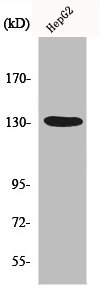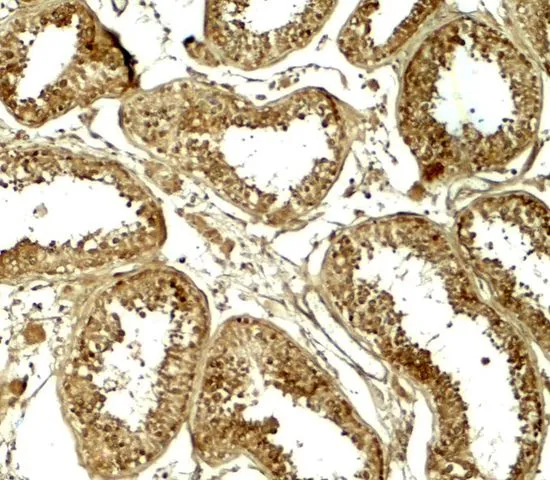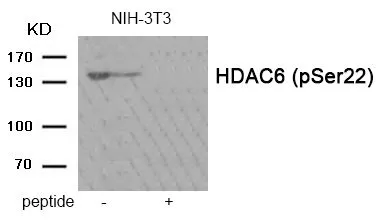HDAC6 antibody
GTX12173
ApplicationsImmunoPrecipitation, Western Blot
Product group Antibodies
TargetHDAC6
Overview
- SupplierGeneTex
- Product NameHDAC6 antibody
- Delivery Days Customer9
- Application Supplier NoteWB: 1:1,000. IP: 5-10 microg. *Optimal dilutions/concentrations should be determined by the researcher.Not tested in other applications.
- ApplicationsImmunoPrecipitation, Western Blot
- CertificationResearch Use Only
- ClonalityPolyclonal
- ConjugateUnconjugated
- Gene ID10013
- Target nameHDAC6
- Target descriptionhistone deacetylase 6
- Target synonymsCPBHM, HD6, JM21, KDAC6, PPP1R90, protein deacetylase HDAC6, E3 ubiquitin-protein ligase HDAC6, alpha-tubulin deacetylase HDAC6, protein phosphatase 1, regulatory subunit 90, tubulin-lysine deacetylase HDAC6
- HostRabbit
- IsotypeIgG
- Protein IDQ9UBN7
- Protein NameHistone deacetylase 6
- Scientific DescriptionRegulation of gene expression is mediated by several mechanisms. Among them are DNA methylation, ATP dependent chromatin remodeling, and post-translational modifications of histones, such as the dynamic acetylation and deacetylation of epsilon-amino groups of lysine residues present in the tail of core histones. The enzymes responsible for this reversible acetylation/deacetylation process are histone acetyltransferases(HATs) and histone deacetylases (HDACs), respectively. HATs act as transcriptional coactivators and HDACs are part of transcriptional corepressor complexes. Mammalian HDACs can be divided into three classesaccording to sequence homology. Class I consists of the yeast Rpd3-like proteins HDAC1, HDAC2, HDAC3 and HDAC8. Class II consists of the yeast Hda1-like proteins HDAC4, HDAC5, HDAC6, HDAC7, HDAC9 and HDAC10. Class III consists of the yeast Sir2-like proteins. Whereas class I HDACs are ubiquitously expressed, most class II HDACs are tissue-specific. Class II HDACs are larger than those of class I and their catalytic domain is located in the carboxy terminal half of the protein. HDAC6 is a unique deacetylase among class II members in that it contains a duplicate of the catalytic domain in its NH2 terminus as well. The deacetylase activity of class II HDACs is regulated by subcellular localization. Endogenous HDAC6 is predominantly cytoplasmic where it associates with microtubules and functions as an alpha-tubulin deacetylase. HDAC6 contains a conserved zinc finger motif that is probably involved in the regulation of ubiquitination.
- Storage Instruction-20°C or -80°C,2°C to 8°C
- UNSPSC12352203




![ICC/IF analysis of COS7 cells transiently transfected with HDAC6 plasmid using GTX84377 HDAC6 antibody [4C5].](https://www.genetex.com/upload/website/prouct_img/normal/GTX84377/GTX84377_1063_ICCIF_w_23061420_173.webp)
![ICC/IF analysis of COS7 cells transiently transfected with HDAC6 plasmid using GTX84379 HDAC6 antibody [1D11].](https://www.genetex.com/upload/website/prouct_img/normal/GTX84379/GTX84379_1064_ICCIF_w_23061420_267.webp)
